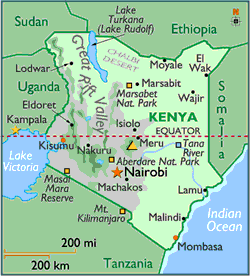I am home in Boston. Odd that it is significantly hotter here than it was in Africa! The trip was truly amazing. All of the people I worked with were terrific. In addition to having a lot of fun, I feel that I learned a lot, both about these monkeys and the research process. Our PI (primary investigator) Steffan was very patient as we learned how to distinguish and follow the monkeys.
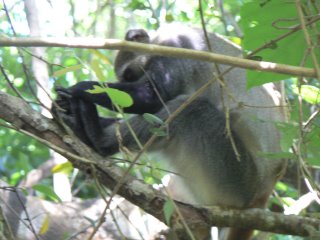 Contrary to our fear that we were part of the stress they were experiencing, within a couple of days, we were no more than another animal in the forest. They were so oblivious of our presence, in fact, that by the last few days they were falling asleep in the trees while we watched and recorded their "activities".
Contrary to our fear that we were part of the stress they were experiencing, within a couple of days, we were no more than another animal in the forest. They were so oblivious of our presence, in fact, that by the last few days they were falling asleep in the trees while we watched and recorded their "activities".Mother nursing baby
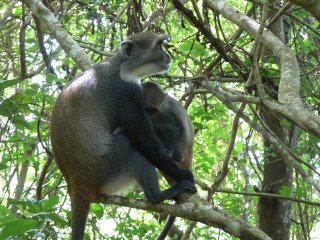
The social structure was interesting to watch. Periodically the monkeys stopped to groom each other, or grab a baby and start nursing. We all agreed that there is almost nothing cuter than a baby monkey!

This little guy was enjoying eating his tail, but
having a hard time keeping track of it.
Jeffrey and I working in the field.
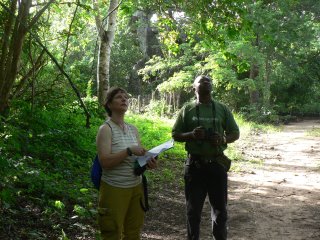
Jeffrey was a delight to work with. He has run 13 Earthwatch expeditions. Most of his work is on Black Rhinos, but he certainly knew his monkey stuff too!
The trip to Tsavo was an amazing pilgrimage back to our origins. It was wondeful to see all of the big wild animals with 6,000 square miles to roam!

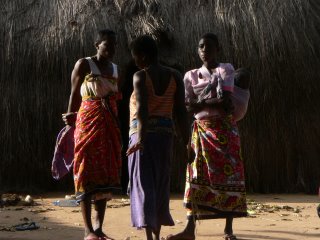
We also got into a few local towns and were treated to a drumming and dancing performance by the villagers just outside the ruins that were our study site.
More photos will be posted at ofoto - I'll forward the link
Marsha

